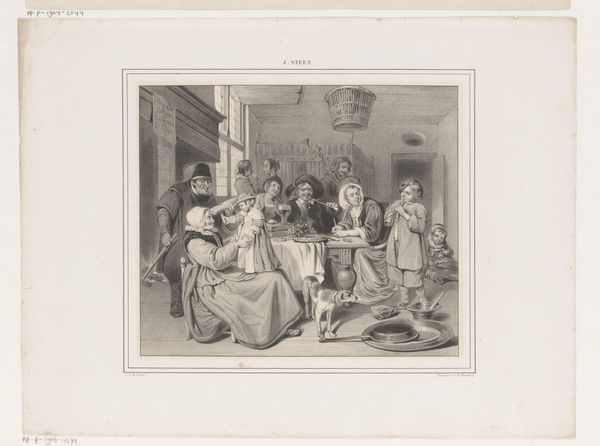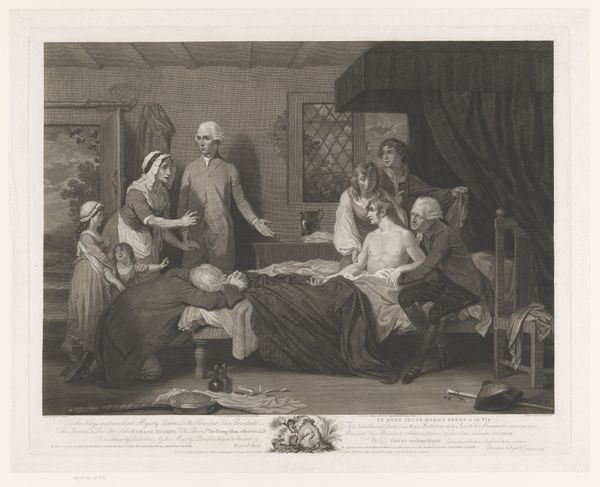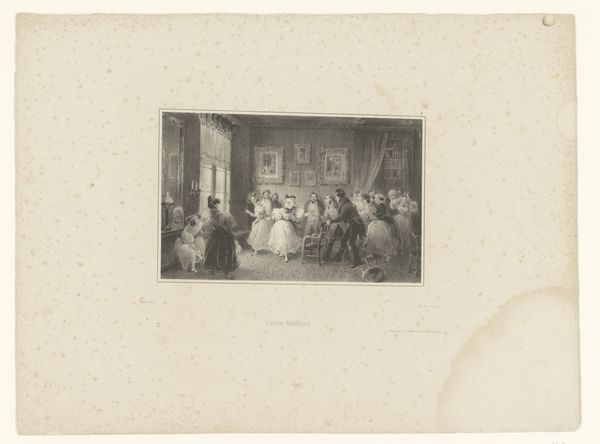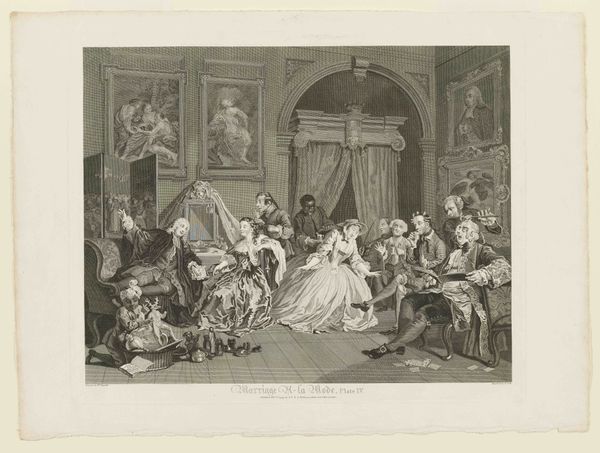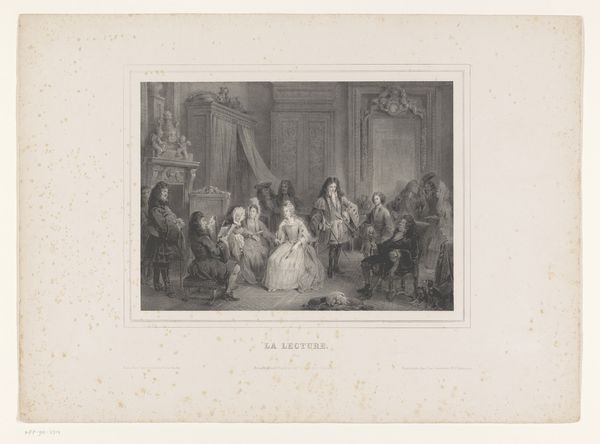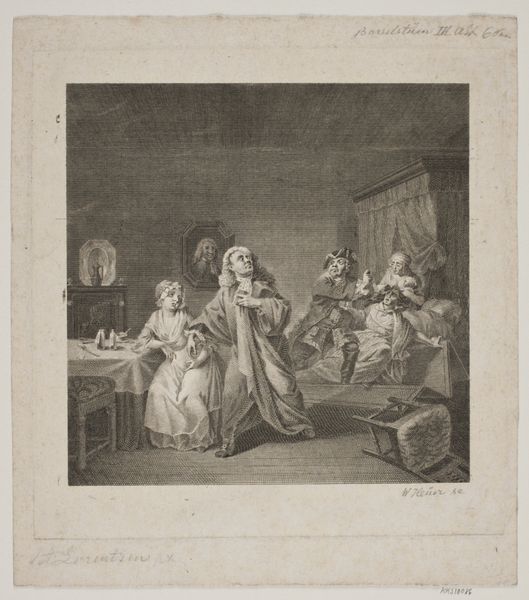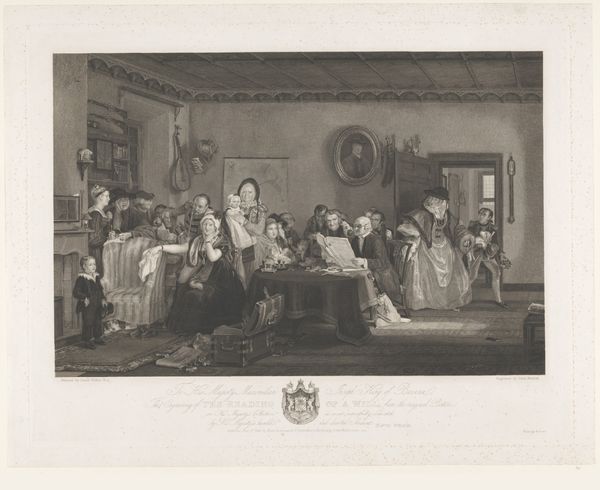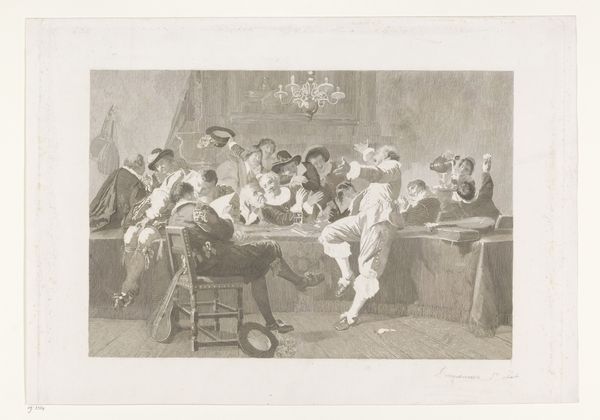
Dimensions: 379 mm (height) x 458 mm (width) (billedmaal)
Curator: This is "Barselsstuen", created in 1851 by Peter Gemzøe. It's a lithograph, a print, housed here at the SMK, Statens Museum for Kunst. Editor: It’s so still, despite the implied bustle. It almost feels staged, like a tableau vivant. The greyscale gives it a weight, a historical depth. The texture looks almost like woven cloth rather than a print. Curator: The title translates to "The Childbirth Room". It's clearly a genre scene, depicting the custom of women gathering to visit a new mother. Think about the social codes embedded here. The hats are a signal of rank. Notice also that this moment in a woman’s life, normally private, is made extremely public within this all-female society. Editor: Yes, the dresses—the visible wealth! One wonders what kinds of textile trades supported this scene of leisure and support. All those layers of linen and lace suggest meticulous processes of cultivation and manufacture and an awful lot of labor. Consider the labour embedded in the production of these garments compared with the very limited material objects given to this new mother Curator: Exactly. The eye is led from one object, one symbolic item, to the next: The mother’s pale dress signifying purity and health; the tea set—an offering; even the two lapdogs at the far left acting as guardians. And then think, what’s absent? No men are depicted here at all. What kind of matriarchal understanding can we bring to it by exploring the role of women, community and childbirth? Editor: The absence of men does seem stark when viewing this print. How was this print produced? Lithography requires a very particular kind of limestone and a really complex series of chemical reactions and labor that is entirely invisible. The production feels much like a material performance. It certainly is worth considering who might consume such an artwork. What message did they take? Curator: Good point, especially about production. To me, that quiet mood suggests a ritual. Almost like the Visitation we see in earlier religious paintings, but repurposed. This lithograph reveals so much of 19th-century Denmark through what it shows and what it conceals. Editor: Agreed. Focusing on production and labor helps me really notice those details and the complexity they hint at.
Comments
No comments
Be the first to comment and join the conversation on the ultimate creative platform.

